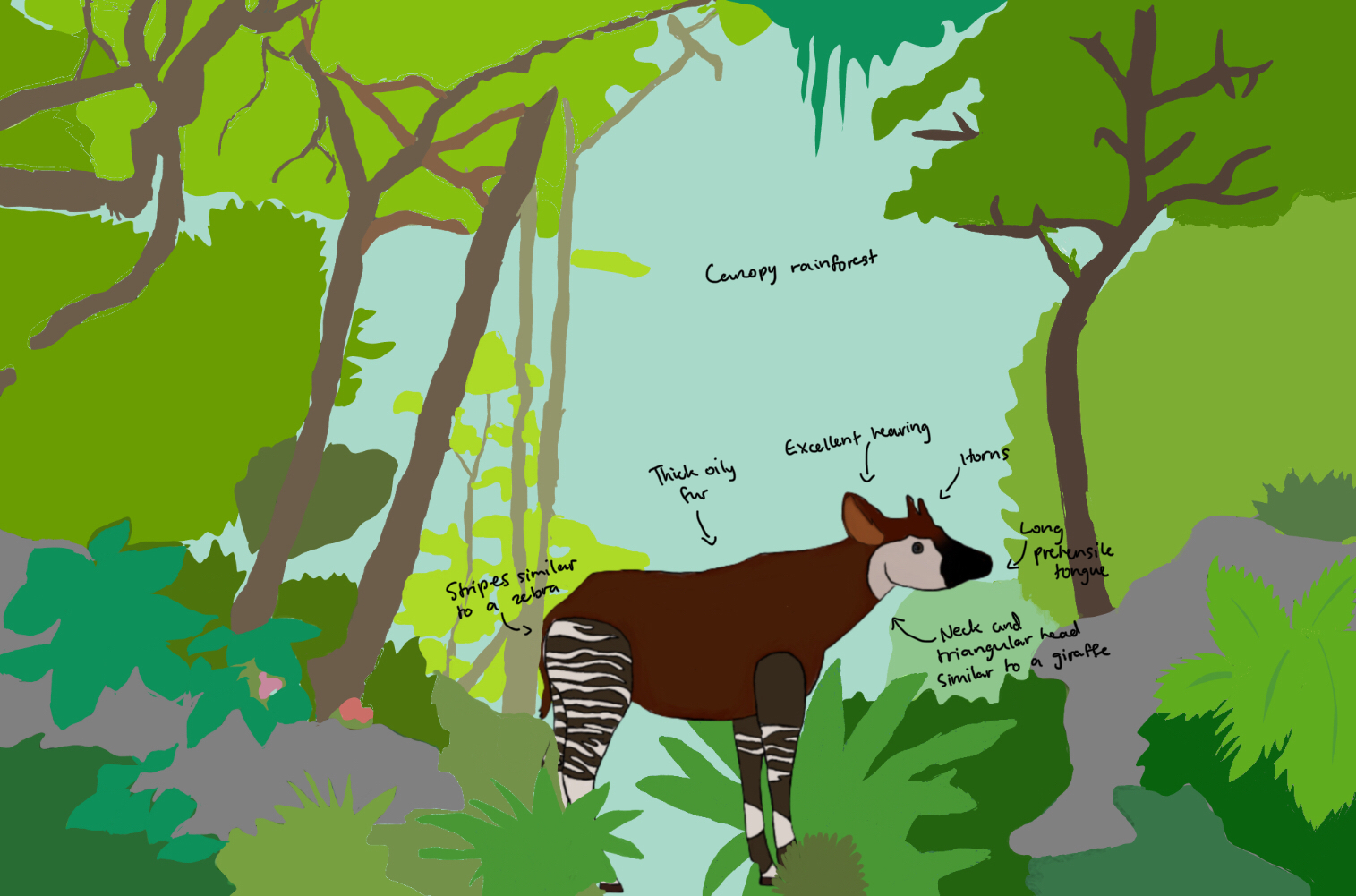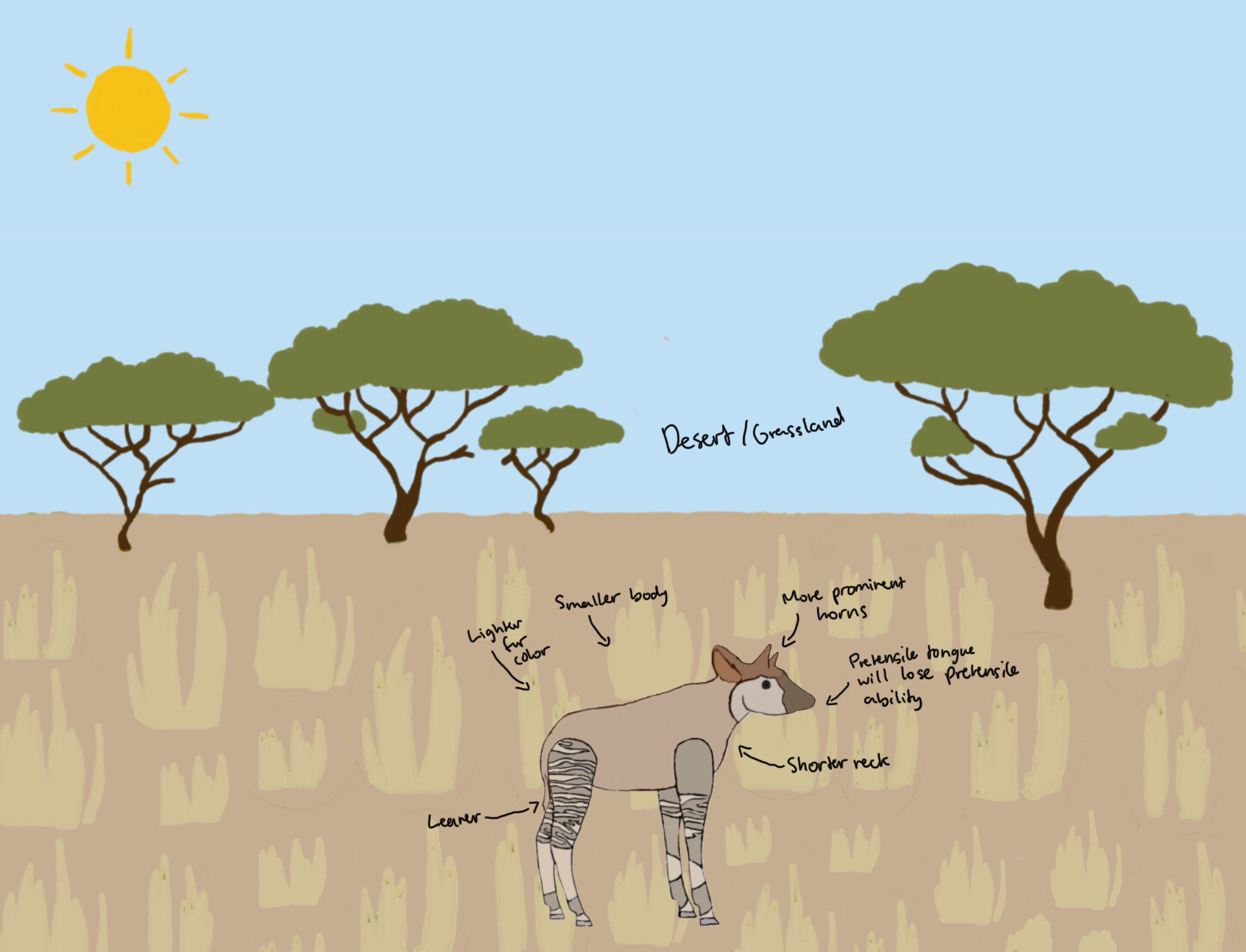As climate change causes temperatures to increase beyond the ideal temperature for photosynthesis, fewer trees will exist in tropical rainforests where Okapis live. Due to the decrease in rainfall caused by rising sea levels, the existing trees will become much shorter. The rainforest will essentially become a savanna. To survive in this new habitat, Okapis will have shorter necks, because they won’t need to reach up high for food. Their long prehensile tongues will also lose their prehensile ability. They will become leaner, so they can escape predators in an open savanna, where there are not many places to hide. The Okapi’s diet changing from leaves and fruits to mainly grasses will result in them becoming smaller. Their fur will become thinner and change to a lighter brown color, so that they can camouflage with the tall grasses in their environment. Their horns will become more prominent to defend themselves.
Contact us
Thank you for your interest in contacting Future Engineers. We look forward to connecting with you!
General Inquiries
support@futureengineers.orgSponsorship Inquiries
sponsor@futureengineers.org

